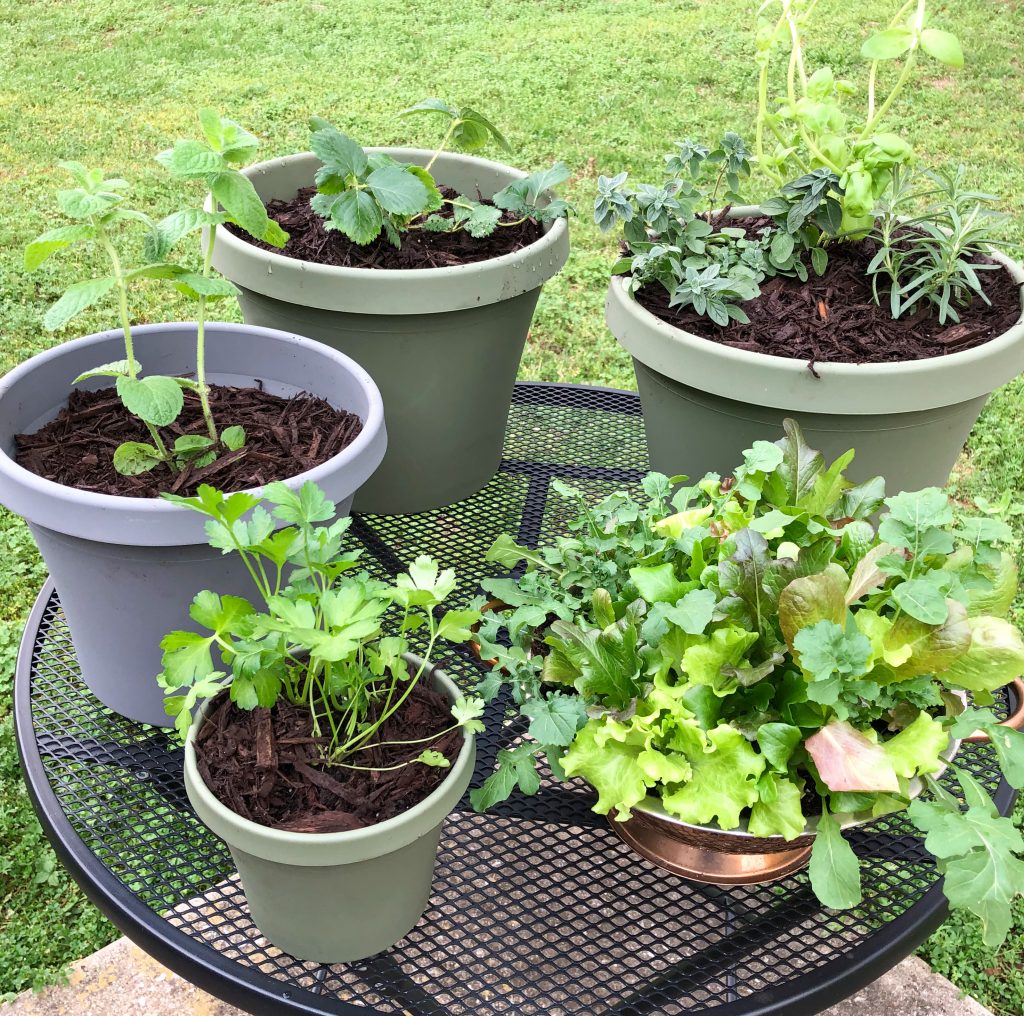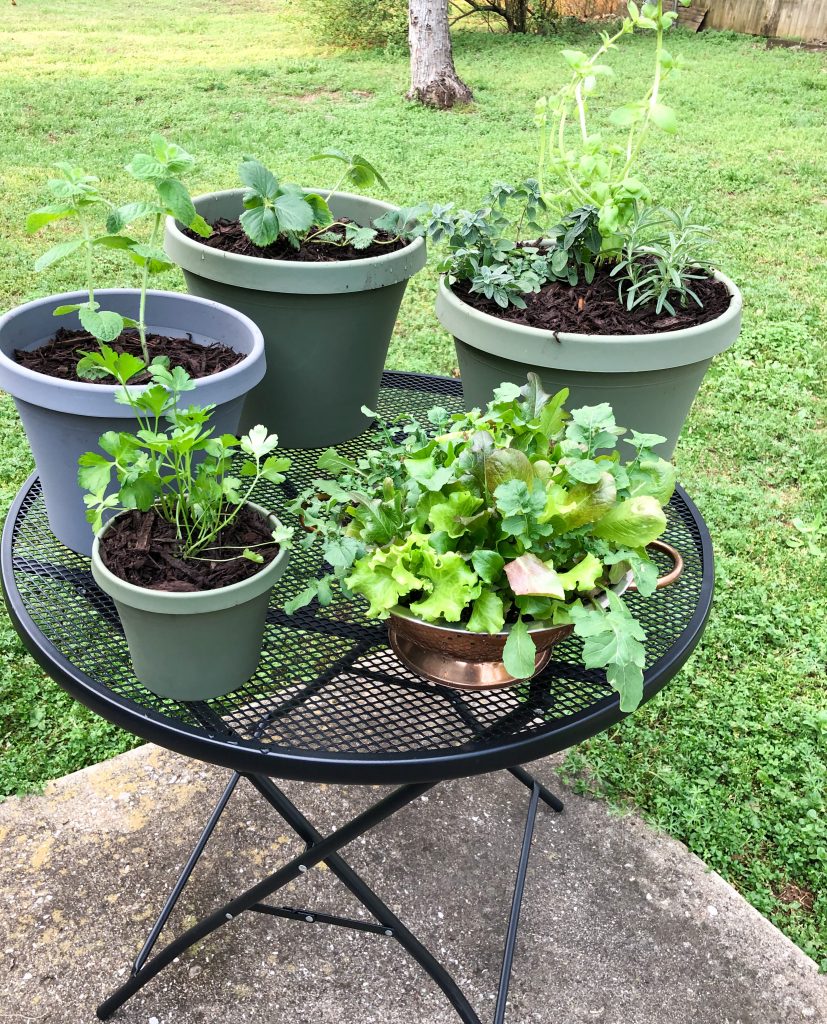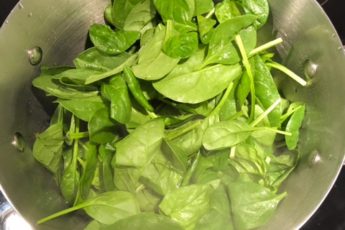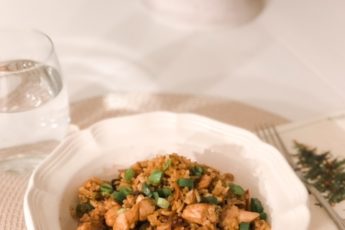
Before starting our own herb garden this year, my knowledge level of growing plants included the fact that they need dirt and water, and that’s about the extent of it. So if you have little to no knowledge and are looking for need-to-know information to start an easy, convenient, but also fresh and organic herb garden then this post is for you! I’ve used extensive research findings and expert advise to create this easy-to-follow guide on how to start an herb garden in pots.
I’ve wanted to grow a vegetable and herb garden for years, but never seemed to have the time, type of home or resources to commit to it. But this year Jimmy and I have decided to grow our own vegetable and herb garden. And I couldn’t be more excited to watch our little sprouts grow and ensure the organic quality of our food.
I decided to take charge of the herb garden, since I do most of the cooking in our house and love to create recipes using fresh ingredients. While I love the idea of growing my own food and fresh organic everything, I also work full time and need convenience and functionality. This is why I chose to use pots for my herbs, because they are portable, containable, easy to care for and a great option for patios, townhomes and apartment dwellers (or those who just don’t like to get dirty).
I selected the 5 herbs I thought I would actually use and that are relatively easy to grow:
- parsley
- mint (mojitos or mint juleps, anyone?)
- basil
- oregano
- rosemary
Now, unfortunately you can’t just go throwing seeds into a dirt filled pot and hope for the best (I suppose you could, but your chances of success are low). Each plant has it’s own set of requirements to flourish, and after extensive research I’ve compiled a nice little summary of the important info you need to know when growing your own herb garden in pots.
Some herbs can grow in the same pot as others, and some herbs like to be alone (this article further explains companion planting). I’ve listed out steps to planting your herbs, followed by some important information about each one individually like how often to water etc.
Materials You Will Need
- Garden pots: Be sure that you choose pots with drain holes in the bottom. For most herbs, a 6-10 inch diameter pot will work well, depending on how big you want your plants to grow. If you are planting multiple herbs in one pot use a larger size, no smaller than a 12 inch diameter pot for 3 herbs.
- Coffee filters: You will need to cover the bottom of each pot with a coffee filter, most round pots will only require one coffee filter. If using round pots greater than 12 inches in diameter or unusually shaped pots you may need more than 1 coffee filter per pot. Placing coffee filters at the bottom of each pot allows excess water to flow out while keeping soil in the pot. If you don’t use coffee filters and soil clogs the drain holes, it can cause “root rot” which could kill your plant. Using coffee filters also keeps the plant moist, reduces mess, and keeps soil inside the pot so plants can spread their roots.
- Potting soil: 2-3 large bags, depending on how many and what size pots you’re using. I would buy 3 bags, you can always return one if you don’t use it. Potting soil is inexpensive and can bought at any home goods or garden store. I used the Harvest Organics Potting Mix from Lowe’s.
- Herbs: Buy seedlings (a young plant that already has roots and is above ground). The pic below is a seedling. You are not buying seeds!
- Mulch: 1 small bag, use an untreated mulch that hasn’t been dyed to ensure no chemicals get into your herbs. Spreading a light layer of mulch over your soil will help keep the plants moist and prevent them from quickly drying out.
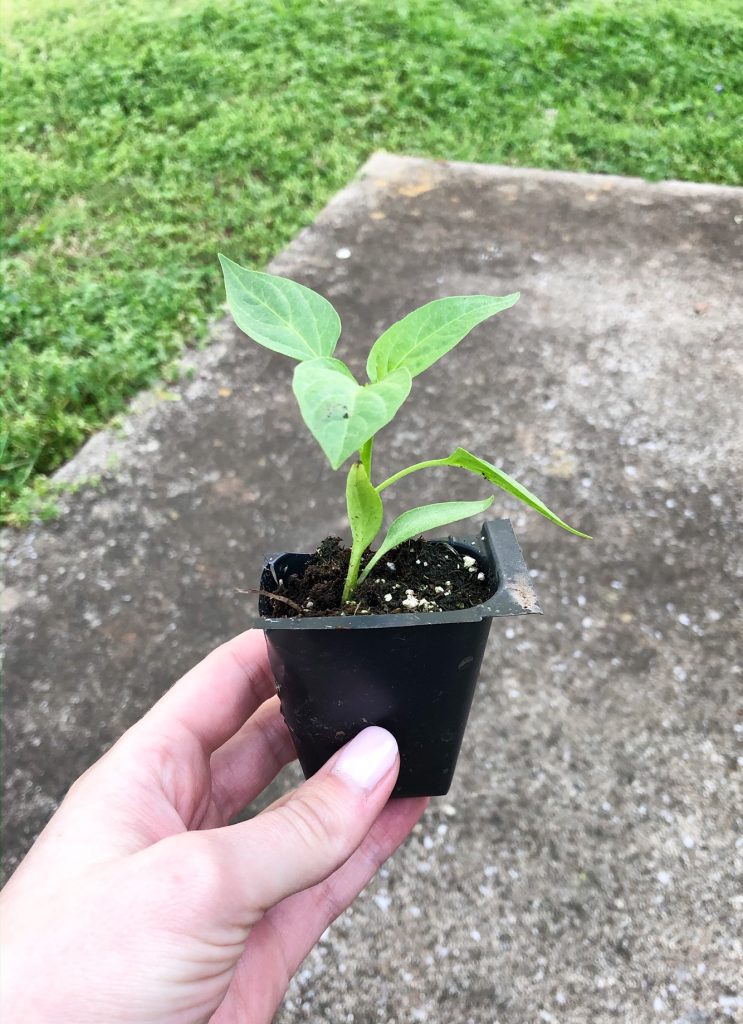
How to Plant Your Herb Garden
- Lay out all of your materials.
- Place a coffee filter in the bottom of each pot so that it covers the drain holes (see pictures below). This ensures proper drainage, which is important for regulating the water flow through your plant. It’s kind of an art keeping the plants moist but not wet.
- Fill each pot about 2/3 full with potting soil.
- Gently remove each plant from its container, and set in the pot (with roots intact!) to the depth of the roots.
- Cover and fill with remaining potting soil so the soil is level with top of the roots, and a little higher to secure the plant.
- Gently use your hands to lay a light layer of mulch over soil.
- Lightly water.
- Let your herbs soak up some sunshine and Jesus.
- About once every 2-4 weeks, mix a plant food into your water and use to fertilize your herbs.

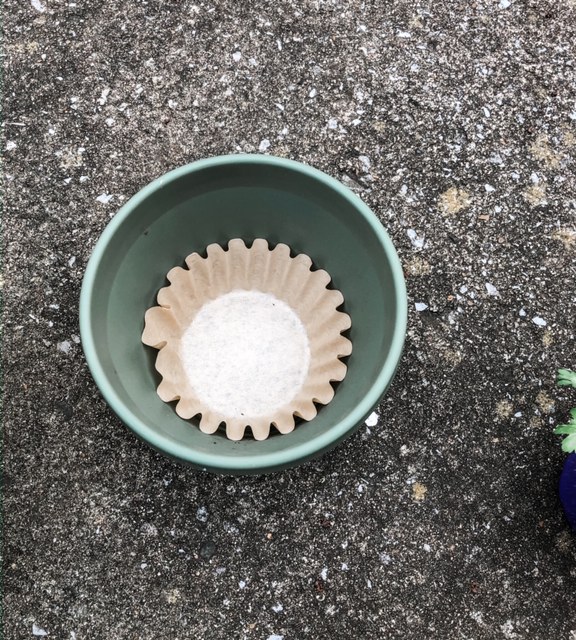
6 inch diameter pot 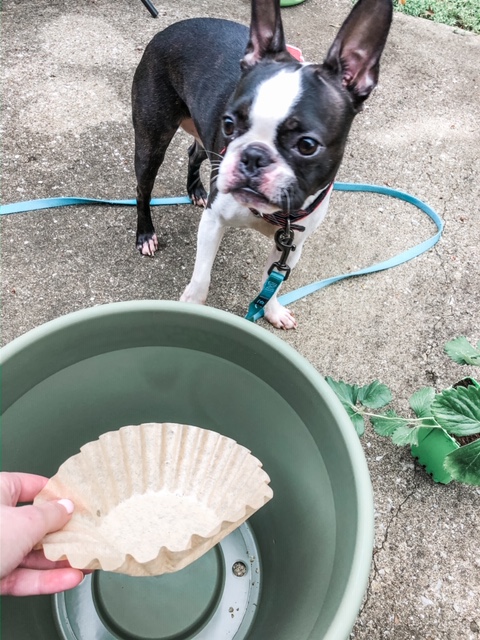
Jackson trying to help… 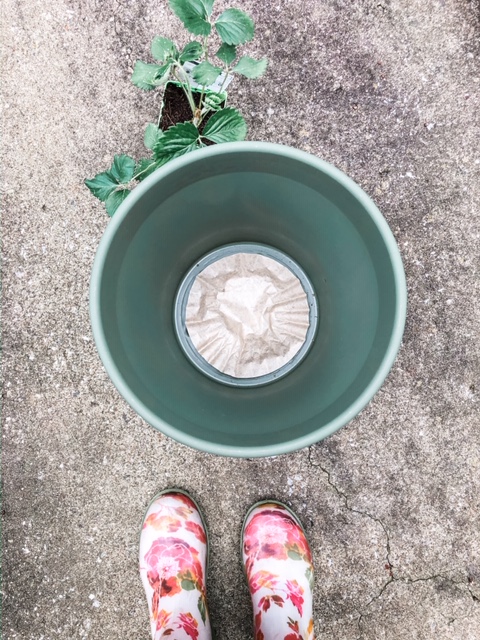
10 inch diameter pot
Parsley
- Watering: water regularly, keep soil moist
- Difficulty: easy (good for beginners)
- Needs this much room: about 8 inches
- Sunlight: full sun
- Harvest: Begin harvesting leaves once the plant is at least 6 inches tall, use a sharp knife or garden shears to cut the outermost, lowest leaves first
- Note: grows well next to most other herbs and vegetables
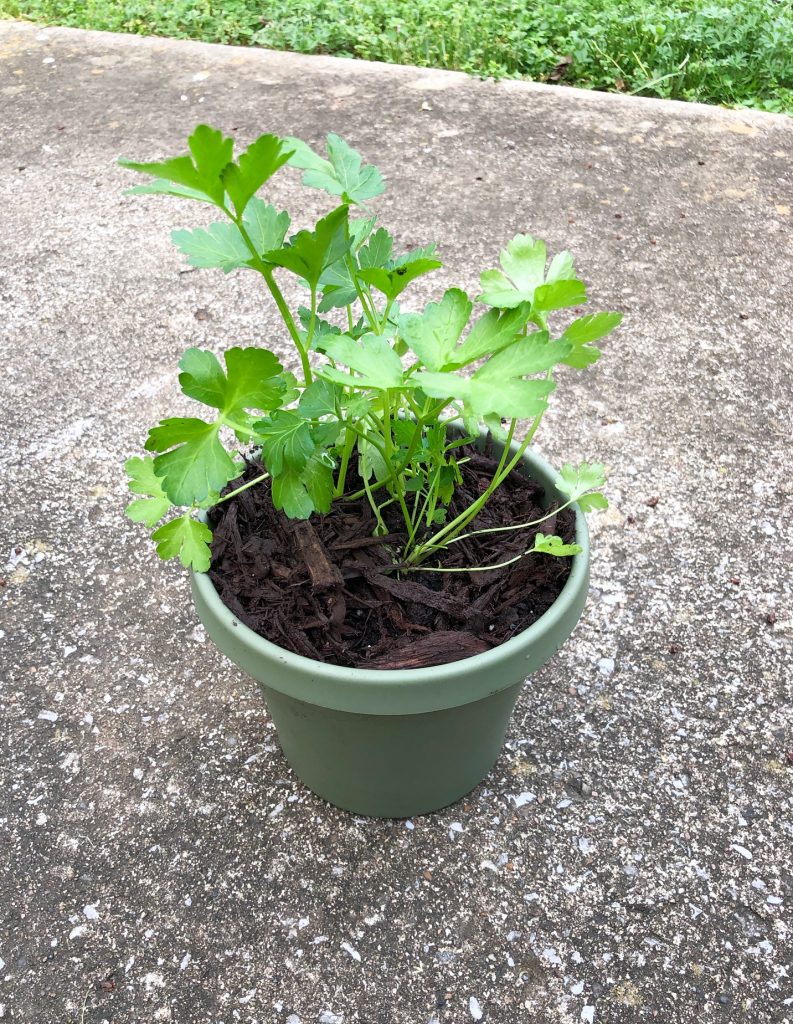
Mint
- Watering: water regularly, keep soil moist
- Difficulty: easy
- Needs this much room: about 2 feet if planting more than one plant. Mint likes to take over if planted in a garden, it does well in it’s own pot. I planted a single mint seedling in a 10 inch diameter 1 gallon pot.
- Sunlight: full sun to part sun
- Harvest: pick leaves frequently, which will encourage the plant to produce more leaves. Choose outward leaves closer to the ground.
- Note: likes to take over. Mint does well alone grown in a single pot.
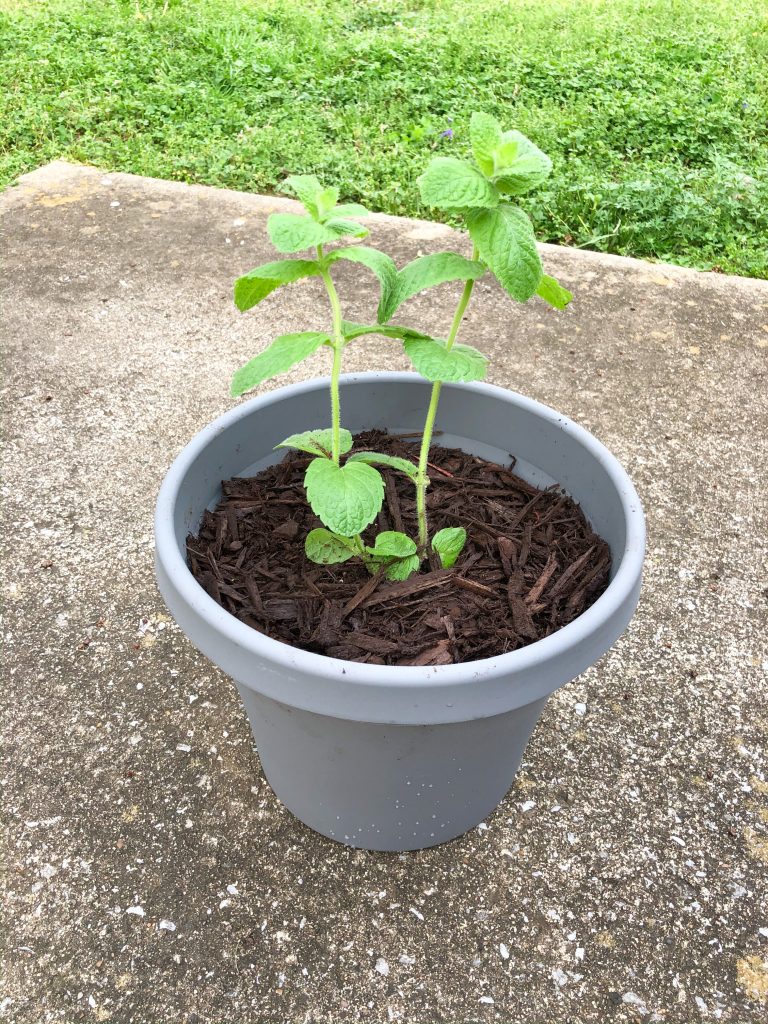
Basil
- Watering: keep moist but not wet, use a pot with good drainage
- Difficulty: easy to moderate
- Needs this much room: about 10-12 inches
- Sunlight: full sun
- Harvest: start picking leaves as soon as the plant is 6-8 inches in height. Picking leaves regularly encourages further growth. Harvest leaves from the top down.
- Note: basil likes a warm to hot climate, it also grows well next to tomato plants (God’s way of telling us to eat more caprese salad, which I am totally fine with). A basil plant should grow to be about 12-24 inches tall.
Oregano
- Watering: water when soil is dry to touch, don’t over-water
- Difficulty: easy
- Needs this much room: about 8 to 10 inches
- Sunlight: full sun
- Harvest: pinch off leaves regularly as you need them. Once the plant is about 4 inches tall, trimming lightly encourages more growth. The most flavorful leaves grow just before flowering.
- Note: oregano likes a warm climate and full sun. It is friendly and grows well with other herbs and vegetables, particularly basil.
Rosemary
- Watering: water when soil is dry, avoid over-watering. Rosemary likes to dry out between waterings.
- Difficulty: easy
- Needs this much room: about 10-12 inches
- Sunlight: full sun
- Harvest: once a branch is 8 inches long, it is ready to harvest. Cut off the top 2-3 inches with sharp shears or scissors. Leave the bottom of each branch with a few inches of healthy green sprigs. Let the branch grow back before harvesting again.
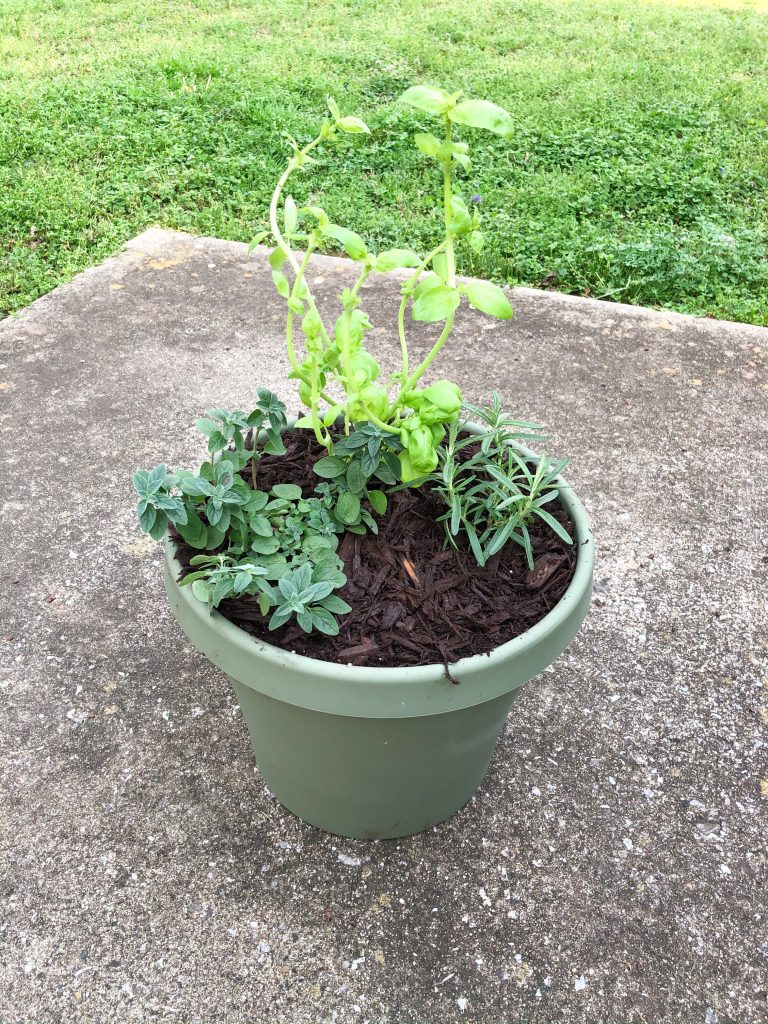
Helpful Resources for Growing Your Herb Garden
Stay tuned, I will have some yummy fresh garden herb recipes coming soon!


